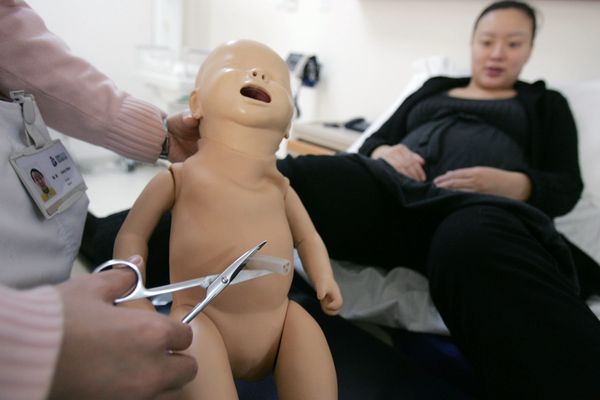
Pop quiz: How many of you think the reason you have an "innie" or "outie" belly button has something to do with the way the obstetrician cut and tied off your umbilical cord when you were born? Come on, be honest! The persistence of the innie/outie myth is "Exhibit A" that we don't know jack about our belly buttons.
Your belly button is the leftover remnant of what was once the umbilical cord, the rope-like connection between you and your mother that supplied all of your nutrients and oxygen when you were in the womb. When you were born, the doctor (or maybe even your shaky-handed father) cut the umbilical cord a couple of inches away from your belly and clamped off the remaining section.
Advertisement
There's no tying involved. Once it's clamped, the small section of umbilical cord dries up and falls off in about a week. What's left is the umbilicus — or belly button. And the shape and size of the belly button depends entirely on the way your tummy heals after the cord falls off. If you have an outie, it's likely due a mild umbilical hernia or slight infection of the site. Roughly 90 percent of people have innies.
Here are five more fascinating bits of navel news.
Advertisement


